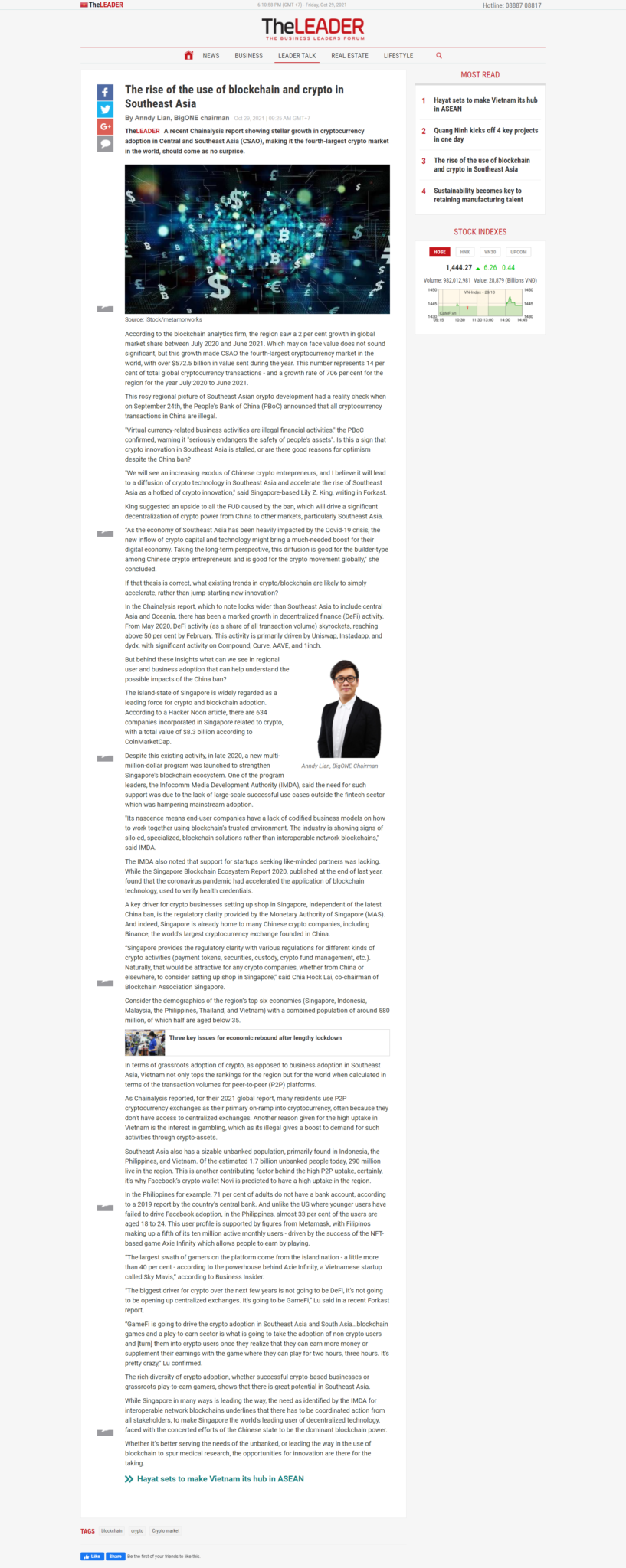Crypto trading platform BitMart said it would use its own funds to compensate users affected by a Dec. 4 hack of the platform — the cost of which it had estimated to be around $150 million, according to a series of updates posted to its website.
Blockchain security and data analytics company PeckShield, however, estimated the loss to be around $200 million.
“Total estimated loss: ~200M (~100M on @ethereum and ~96M on @BinanceChain ). (Previously we only counted the loss on @ethereum). And here is the list of affected assets/amounts on @BinanceChain,” the company tweeted.
Crypto Hack Headlines Bad for Business
Anndy Lian, chairman of BigONE Exchange and founding member of INFLUXO, told GOBankingRates that something reading like “crypto got hacked again” is never a good headline for the industry.
“I have seen many clickbait-like headlines going around to downplay cryptocurrency. The hack is a one-off situation and will act as a reminder to other exchanges to tighten their security and do regular checks for any possible exploits or vulnerabilities,” Lian said.
He added that Bitmart’s promise of paying back the affected projects and users “shows responsibilities and dedication to their clients and also sets a good example for the crypto space and the naysayers quoted in various news.”
“It is unfortunate for the hack to happen to Bitmart. I met Sheldon briefly last month when he was in town. We should all help each other and if any of the suspected transactions went into other exchanges, those who have the ability should stop and seize the culprits. This is the time we should all work together,” Lian added.
Lian’s sentiment was echoed by many in the crypto industry.
Crypto Industry Insiders Laud Bitmart Promise to Repay Affected Users
Michael Fasanello, director of training and regulatory affairs at Blockchain Intelligence Group, told GOBankingRates he was “actually impressed by that gesture of appreciation for their customers and owning the situation.”
Fasanello said that, to the best of his knowledge, this is the first instance wherein a hacked exchange has offered to make restitution to customers from the exchange’s own coffers.
“Until FDIC or a similar federal umbrella is in place, reimbursement of customers or recovery of stolen assets are the only appropriate options available to exchanges who are the victim of cyber-enabled financial crime such as hacks or ransomware attacks,” he said.
BitMart Vows to Move Forward, Make Good on Repayment Promise
BitMart said, on Dec. 4, that it had identified a large-scale security breach related to one of its ETH (Ethereum) hot wallets and one of its BSC (Binance Smart Chain) hot wallets.
“The affected ETH hot wallet and BSC hot wallet carry a small percentage of assets on BitMart and all of our other wallets are secure and unharmed. We are now conducting a thorough security review and we will post updates as we progress,” the company said at the time. “During this period, we will strive to maintain transparency and we appreciate your support. Thank you very much.”
In a subsequent post on Dec. 6, BitMart explained that the security breach was mainly caused by a stolen private key that compromised two hot wallets.
“BitMart will use our own funding to cover the incident and compensate affected users. We are also talking to multiple project teams to confirm the most reasonable solutions such as token swaps. No user assets will be harmed,” the Bitmart update claimed.
The company added that it was doing “its best” to retrieve security set-ups and their broader operation and needed time to make proper arrangements.
“The detailed timelines will be announced very soon. In addition, our CEO, Sheldon Xia, will conduct an AMA at 8PM EST Dec 6 on Telegram to share more info regarding the security breach, compensation arrangement, and how we plan to resume operation. We will strive to maintain transparency and your support to BitMart is highly appreciated,” the update read.
Original Source: https://finance.yahoo.com/finance/news/hacked-crypto-exchange-bitmart-promises-200038756.html


Anndy Lian is an early blockchain adopter and experienced serial entrepreneur who is known for his work in the government sector. He is a best selling book author- “NFT: From Zero to Hero” and “Blockchain Revolution 2030”.
Currently, he is appointed as the Chief Digital Advisor at Mongolia Productivity Organization, championing national digitization. Prior to his current appointments, he was the Chairman of BigONE Exchange, a global top 30 ranked crypto spot exchange and was also the Advisory Board Member for Hyundai DAC, the blockchain arm of South Korea’s largest car manufacturer Hyundai Motor Group. Lian played a pivotal role as the Blockchain Advisor for Asian Productivity Organisation (APO), an intergovernmental organization committed to improving productivity in the Asia-Pacific region.
An avid supporter of incubating start-ups, Anndy has also been a private investor for the past eight years. With a growth investment mindset, Anndy strategically demonstrates this in the companies he chooses to be involved with. He believes that what he is doing through blockchain technology currently will revolutionise and redefine traditional businesses. He also believes that the blockchain industry has to be “redecentralised”.




